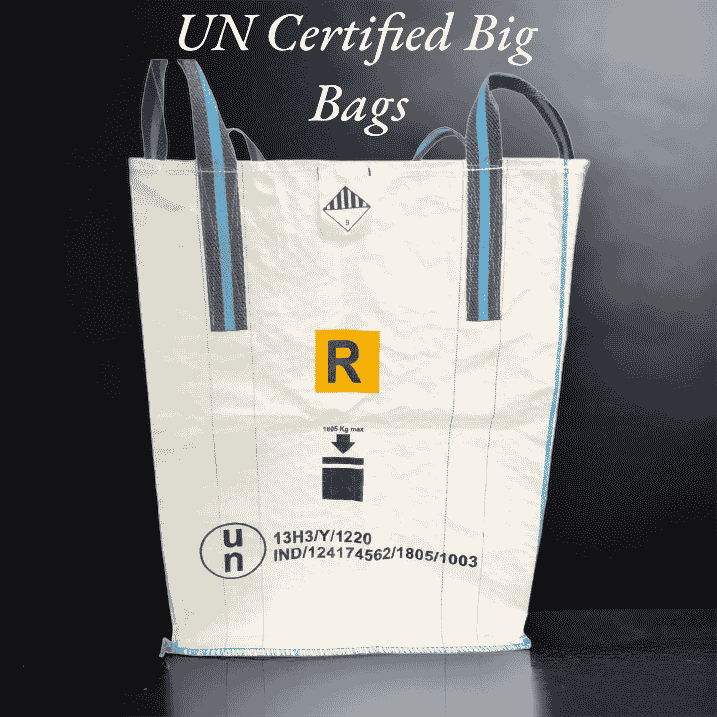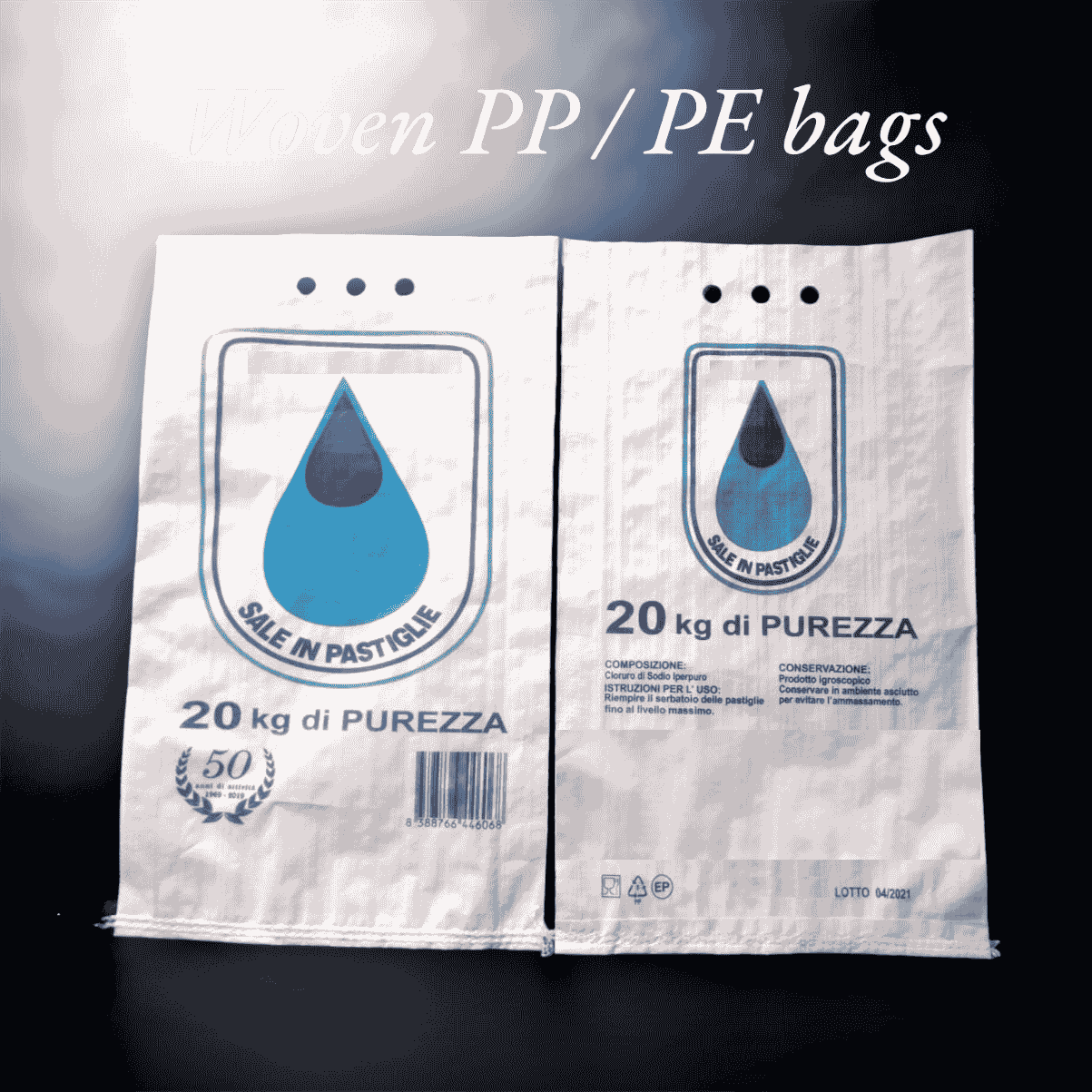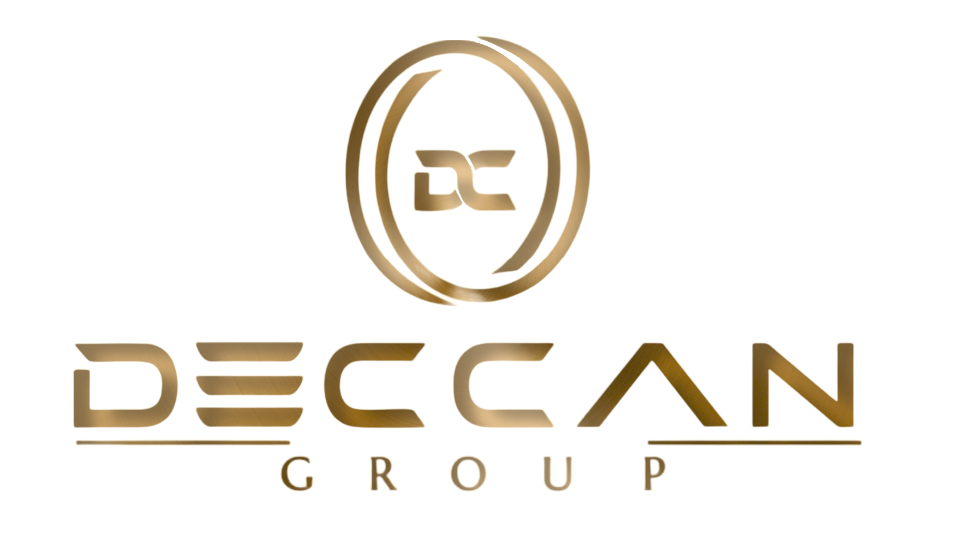un bags
UN bulk bags undergo a series of rigorous performance tests before they can be certified and approved.
- Top Load Test – The bulk bag is filled with material up to its Safe Working Load (SWL) and suspended by its lift loops. A hydraulic cylinder is positioned over the material and used to push it down into the bag. The bag is then subjected to a load that is six times its SWL for five minutes, during which it must remain intact.
- The stacking test is required for all FIBCs that are designed to be stacked. During the stack test, a top load is placed on a filled bag for 24 hours. The top load weighs 1.8x the combined maximum permissible gross mass of the bags that may be stacked on the FIBC. The passing criteria for this test is no loss of contents and no deterioration of the bag making it unsafe for transportation.
- Drop Impact Test – The bulk bag is filled evenly with material up to its SWL capacity and dropped from specified heights, as per the requirements of the Packing Group. The bag should not burst or allow any material to escape at any height.
- Topple Resistance Test – The bulk bag is filled to its maximum SWL capacity and placed on a platform. The platform is then raised and toppled over from a specified height, which varies based on the Packing Group. The bag must remain intact and not burst or leak during the test.
- Lift Loop Strength Test – The bulk bag is filled to its maximum SWL capacity and knocked over onto its side. The bag is then righted into the proper position using only two of its lift loops. The bag and loops must show no signs of damage once righted.
- Tear Resistance Test – The bulk bag is filled to its maximum SWL capacity and cut with a knife at a 45-degree angle to create a tear that is at least 100 mm long. The tear should not expand in size by more than 25% when a load that is twice the SWL is applied to the bag for five minutes.
- Vibration Test – The bulk bag is placed on a platform and subjected to vibrations that cause it to lift from the platform for 60 minutes. The bag should not rupture or leak during the test.
Code designating the type of FIBC:
13H1 = FIBC, Uncoated, No Liner
13H2 = FIBC, Coated, No Liner
13H3 = FIBC, Uncoated, With Liner
13H4 = FIBC, Coated, With liner
A capital letter designating the packing group(s) for which the design type has been approved:
X = Packing Groups I, II and III (IBCs for solids only)
Y = Packing Groups II and III
Z = Packing Group III only
Before you package anything dangerous or potentially dangerous, consult your bulk bag supplier. Make sure your supplier has been properly trained and certified to provide UN certified packaging. The potential financial and operational liability associated with using improper packaging can be extremely high.






